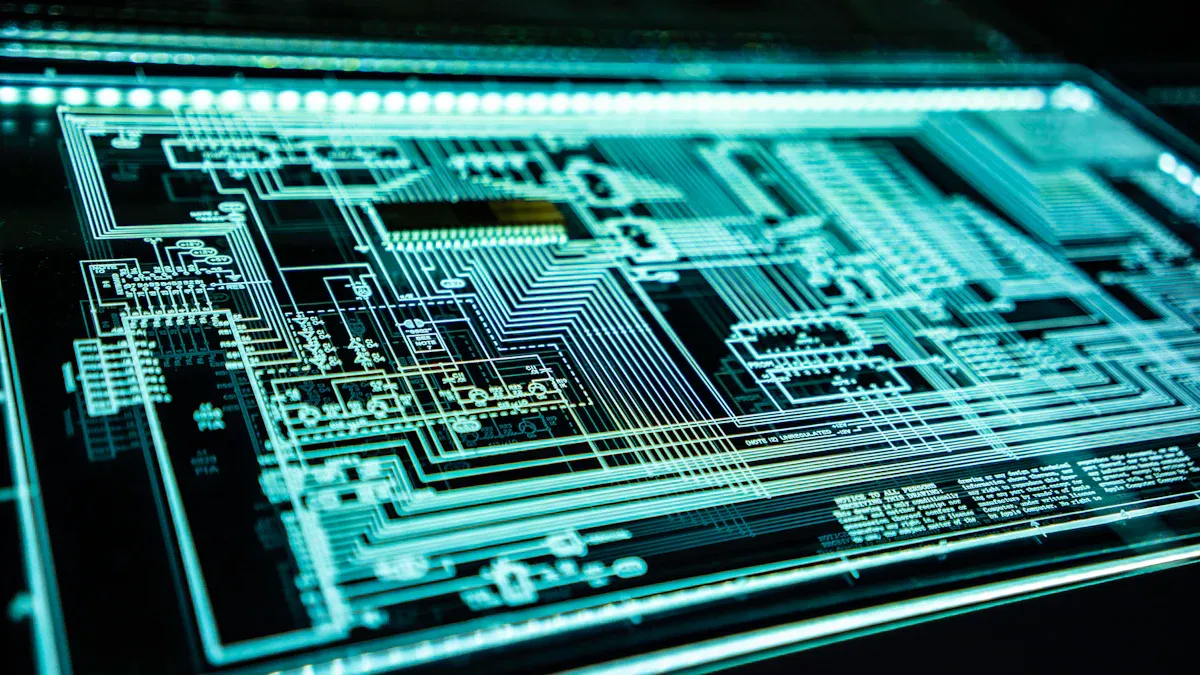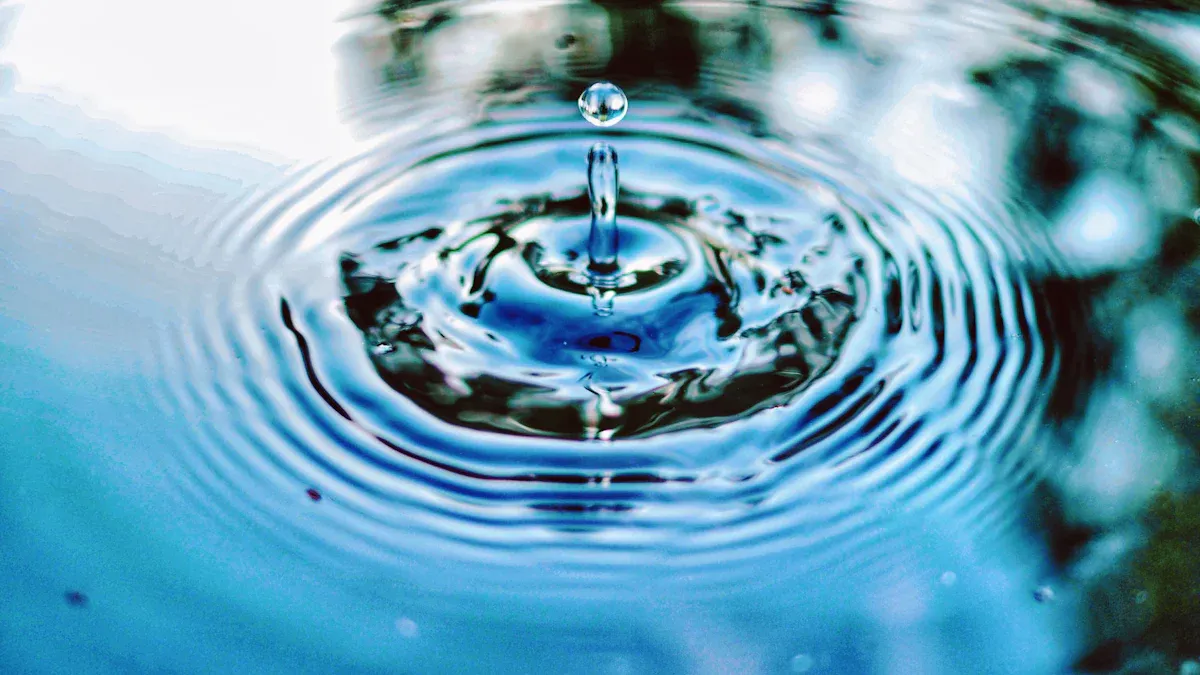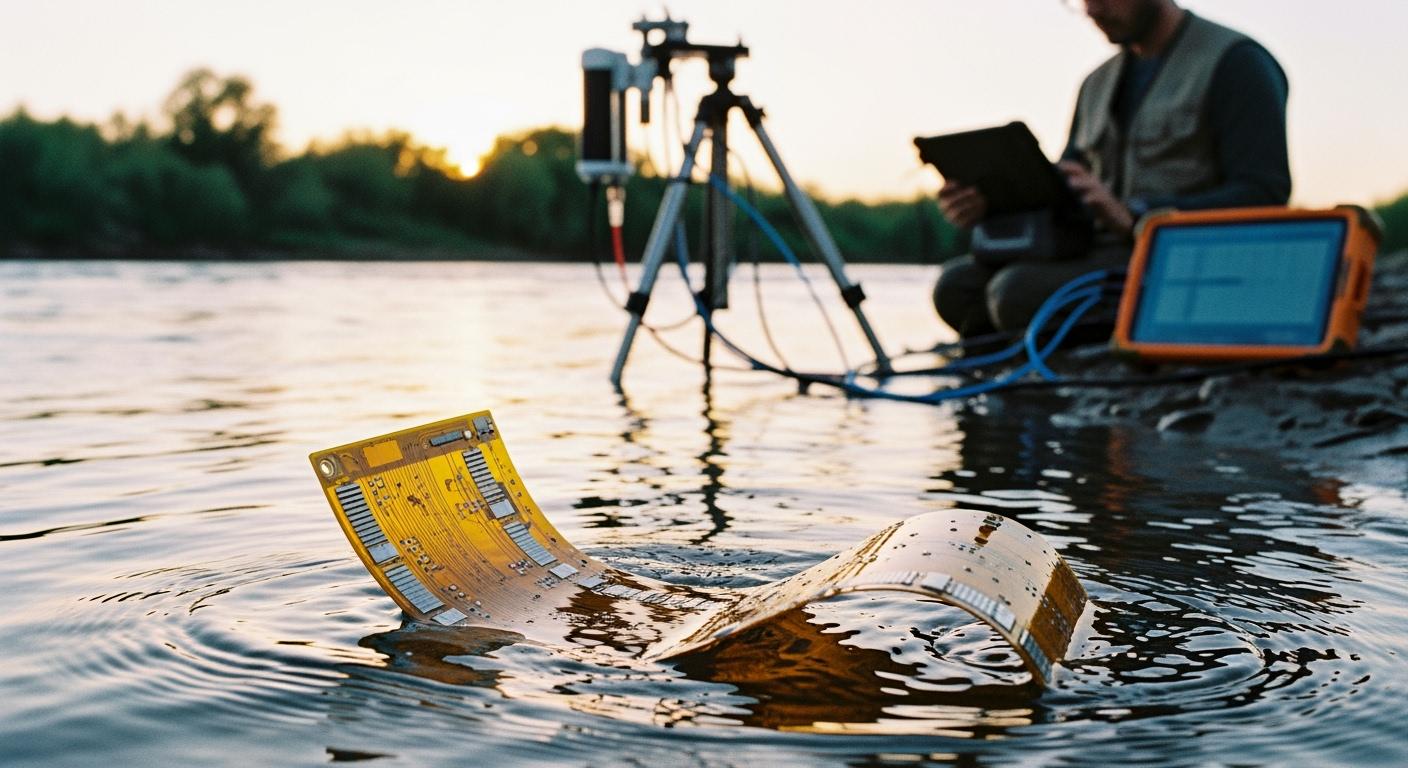You can now use advanced technology to protect rivers and public health. A bendable pcb for river water monitoring lets you attach sensors to uneven surfaces, which helps you collect real-time data from places that were once hard to reach. This flexible design makes it easier for you to track water quality, spot pollution, and respond quickly to changes. By using these systems, you help keep water safe for people and wildlife.
Key Takeaways
- Bendable PCBs allow for flexible sensor placement, improving access to hard-to-reach areas for better water quality monitoring.
- Real-time data collection from automated systems helps detect pollution quickly, ensuring timely responses to protect public health.
- Flexible designs reduce installation costs and maintenance needs, making river monitoring more affordable and efficient.
- Durable materials in bendable PCBs withstand harsh river conditions, ensuring reliable performance even during floods or storms.
- Innovations like wireless sensors and smart analytics are shaping the future of river monitoring, enhancing data collection and analysis.
Bendable PCB for River Water Monitoring

Signal Routing for Environmental Sensors
You need accurate data to monitor river health. A bendable pcb for river water monitoring helps you connect different environmental sensors in one compact system. These flexible circuits let you route signals from sensors that measure temperature, pH, dissolved oxygen, and turbidity. You can place the PCB on curved or uneven surfaces, such as rocks or pipes, without losing signal quality.
Tip: Flexible signal routing reduces the risk of broken connections, even when the river environment shifts or moves.
You can use a bendable pcb for river water monitoring to link multiple sensors in a single device. This setup makes it easier to collect data from several points at once. You do not need to worry about tangled wires or bulky equipment. The flexible design keeps your monitoring system lightweight and easy to install.
- Advantages of flexible signal routing:
- Maintains strong connections in wet or moving environments
- Supports a wide range of sensor types
- Allows for creative placement on natural surfaces
Integration with Water Level and Flow Sensors
You want to track changes in river water levels and flow rates. Flexible PCBs make this possible by supporting direct integration with water level and flow sensors. You can attach these sensors to bridges, buoys, or riverbanks. The bendable design lets the PCB fit tightly against surfaces, which improves sensor contact and accuracy.
Many water level and flow sensors need to stay in place for long periods. A bendable pcb for river water monitoring resists damage from water, mud, and debris. You can trust the system to keep working, even during floods or storms.
| Sensor Type | What It Measures | Benefit of Flexible PCB Integration |
|---|---|---|
| Water Level Sensor | Height of river | Accurate readings on uneven surfaces |
| Flow Sensor | Speed of water | Reliable data in changing conditions |
| Pressure Sensor | Water pressure | Long-term durability in wet areas |
You can combine these sensors with others, such as temperature or chemical detectors, on the same flexible PCB. This approach gives you a complete view of river conditions in real time.
Note: Flexible PCBs help you build monitoring stations that are smaller, lighter, and easier to maintain than traditional systems.
Technology and System Integration
Flexible PCB Materials and Design
You can use flexible PCB materials to create monitoring devices that fit almost any surface along a river. Polyimide and PET films give you strength and flexibility, so your sensors stay in place even when the environment changes. You can design circuits that bend, twist, or wrap around rocks, pipes, and buoys. This flexibility lets you integrate many sensor types, such as turbidity sensors, gas detectors, and RFID tags, into one compact system.
You get more accurate readings because high-resolution ADCs and precise control circuits work well with these materials. You can trust your bendable pcb for river water monitoring to deliver reliable data, even in tough conditions. Flexible PCBs also resist water and chemicals, so your system lasts longer and needs fewer repairs.
Tip: Choose flexible PCB materials that match your river environment. This helps you avoid damage and keeps your sensors working year-round.
Deploying Automated Monitoring Stations
You can set up automated monitoring stations along rivers with flexible PCBs. These stations collect data from multiple sensors and send it to you in real time. You do not need to visit each site often, which saves you time and money. Automation reduces labor costs and helps prevent expensive repairs. Some facilities report up to 25% savings on maintenance.
You get instant alerts if the system detects leaks or contamination. This quick response helps you protect water quality and public health. You can monitor river conditions from anywhere using remote systems. Flexible PCBs make your stations smaller, lighter, and easier to install, so you can cover more locations with less effort.
- Benefits of automated monitoring stations:
- Enhanced accuracy from high-resolution sensors
- Cost savings through reduced labor and maintenance
- Real-time monitoring for faster decision-making
You can combine different sensors on one flexible PCB, which gives you a complete picture of river health. This approach supports low-cost, high-resolution solutions for river water monitoring.
Applications and Benefits

Real-Time Data Collection
You can transform river water monitoring by collecting data in real time. When you use a bendable pcb for river water monitoring, you gain instant access to water quality information. This helps you respond quickly to pollution or sudden changes in river conditions. Automated systems send alerts if they detect contamination, so you can act before problems spread.
Here is a table that shows the key benefits of real-time data collection with flexible PCBs:
| Benefit | Description |
|---|---|
| Enhanced Accuracy | High-resolution ADCs and precise control circuits ensure accurate monitoring of water quality. |
| Cost Savings | Automation reduces labor costs and early issue detection prevents expensive repairs. |
| Sustainability | Optimized processes minimize water and energy waste, supporting environmental goals. |
| Scalable Solutions | Modular designs allow systems to grow with demand, suitable for various scales of water treatment. |
| Improved Safety | Real-time alerts prevent contamination, protecting public health and avoiding fines for non-compliance. |
You can install these systems on monitoring buoys, riverbanks, or even floating platforms. For example, a city in the Midwest used flexible PCBs on river buoys to track water quality during heavy rains. The system sent instant alerts about rising pollution levels, which helped city officials close public beaches before anyone got sick.
Tip: Real-time data helps you make faster decisions and keeps your community safe.
Durability in Harsh River Environments
You need monitoring equipment that can survive tough river conditions. Flexible PCBs use special materials and coatings to protect against water, mud, and temperature changes. These features help your sensors last longer and work reliably, even during floods or storms.
- Conformal coatings shield the PCB from moisture and corrosion, so your system keeps working in humid environments.
- Durable materials like FR-4 with high glass transition temperatures (Tg of 170°C or above) give your device thermal stability.
- Careful design ensures signal integrity and durability, which means you get accurate data even in rough conditions.
You can place these systems on riverbanks, inside pipes, or on floating devices. In one case, researchers installed flexible PCBs inside a riverbank erosion sensor. The device kept working after months of exposure to water and debris, providing valuable data on soil movement and flood risks.
Note: Durable designs reduce maintenance needs and keep your monitoring network running longer.
Low-Cost and Scalable Solutions
You want to monitor more locations without spending too much money. Flexible PCBs make this possible. Their lightweight and compact design lowers installation costs. You can combine multiple sensors on one board, which saves space and reduces the need for extra equipment.
- You can start with a small system and add more sensors as your needs grow.
- Automated data collection cuts down on labor costs.
- Modular designs let you expand your network easily.
For example, a water utility company used flexible PCBs to build a network of contamination detection stations along a river. The company started with five stations and expanded to twenty within a year, all without major increases in cost. This scalable approach helped them catch pollution events early and protect drinking water supplies.
Callout: Flexible PCBs help you build affordable, reliable, and expandable river monitoring systems.
Design Challenges and Future Trends
Environmental and Deployment Considerations
You face several challenges when you deploy bendable PCBs for river water monitoring. Rivers often have unpredictable conditions. Water levels can rise quickly. Debris can strike your equipment. Temperature and humidity change throughout the year. You must choose materials that resist corrosion and withstand harsh weather. Flexible PCBs need strong coatings to protect against water and mud. You also need to think about how to power your devices. Solar panels or long-life batteries work best in remote areas.
You may find it hard to keep your sensors in place. Fast-moving water can dislodge equipment. You should use secure mounting methods, such as straps or anchors, to keep your devices stable. Maintenance can also be a challenge. You want to design systems that need little attention. Using modular components helps you replace parts quickly if something breaks.
Tip: Plan your deployment carefully. Test your equipment in real river conditions before full installation.
Innovations in River Monitoring
You see exciting new trends in river monitoring technology. Flexible hybrid electronics (FHE) now combine the power of integrated circuits with bendable materials. This innovation lets you build smarter, more connected monitoring systems. FHE supports wireless sensors, such as RFID tags, that track temperature, humidity, and other factors. These sensors send data directly to your phone or computer.
The market for FHE in environmental monitoring is growing fast. Experts predict it could reach $3 billion by 2030. This growth means you will have access to more affordable and advanced tools. FHE technology also supports the Internet of Things (IoT). You can connect many sensors across a river network. This setup gives you a complete view of water quality in real time.
Key innovations to watch:
- Wireless sensor networks for remote data collection
- Self-powered devices using solar or kinetic energy
- Smart analytics for faster pollution detection
Note: Stay updated on new technologies. Adopting these trends helps you protect rivers more effectively.
You see bendable PCBs changing how you monitor river water. Flexible designs let you place sensors anywhere, giving you better coverage and faster results. You gain more accurate readings with high-resolution circuits. Real-time alerts help you stop leaks or contamination before they spread. Automated systems boost efficiency in water treatment by up to 30%. You can explore new solutions and help protect rivers for future generations.
- Bendable PCBs improve accuracy and reliability.
- Real-time monitoring helps you respond quickly.
- Automated stations increase efficiency and lower costs.
Stay curious about new technologies. You can lead the way in river water quality tracking.










 2025-11-07
2025-11-07
 BEST
BEST


.png)
.png)
.png)
.png)

.png)

